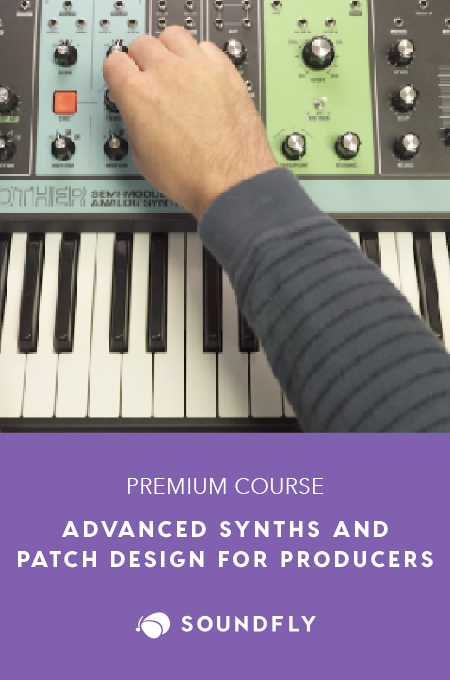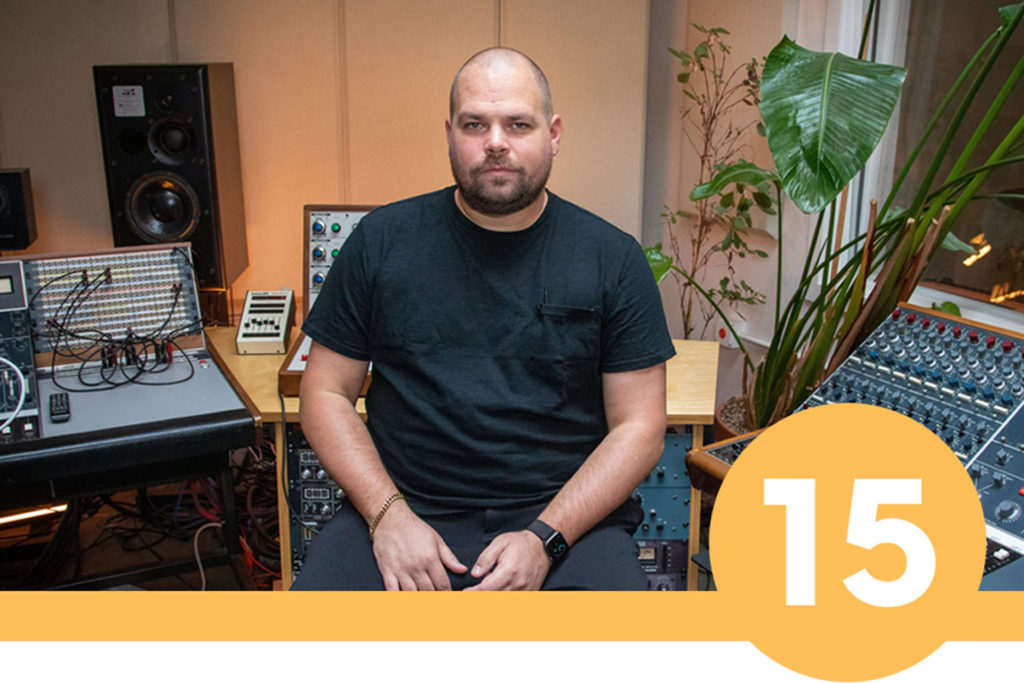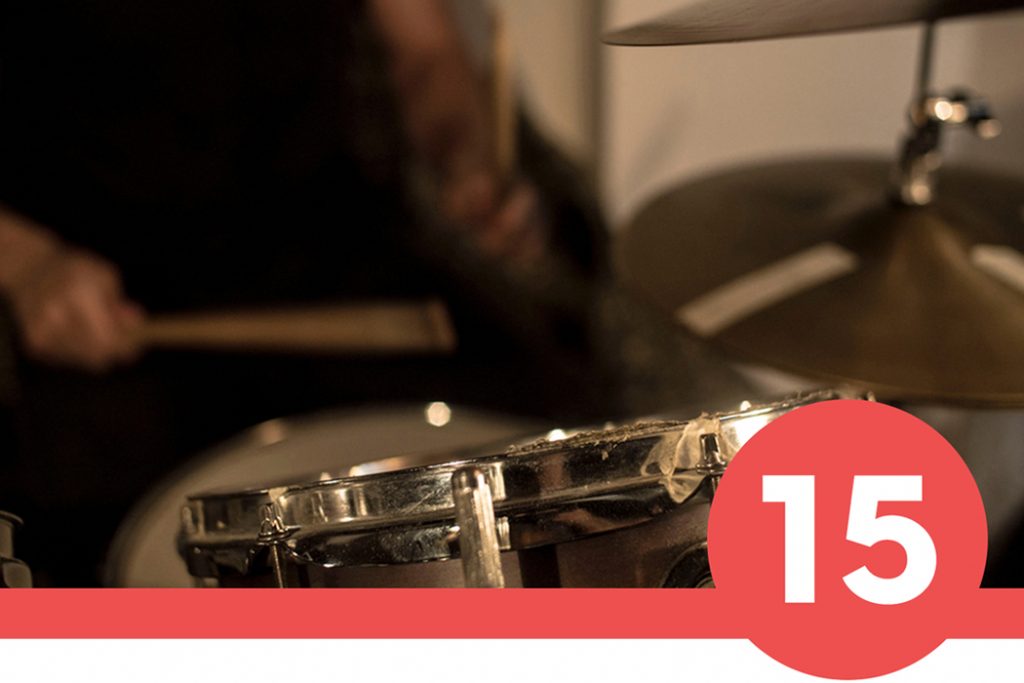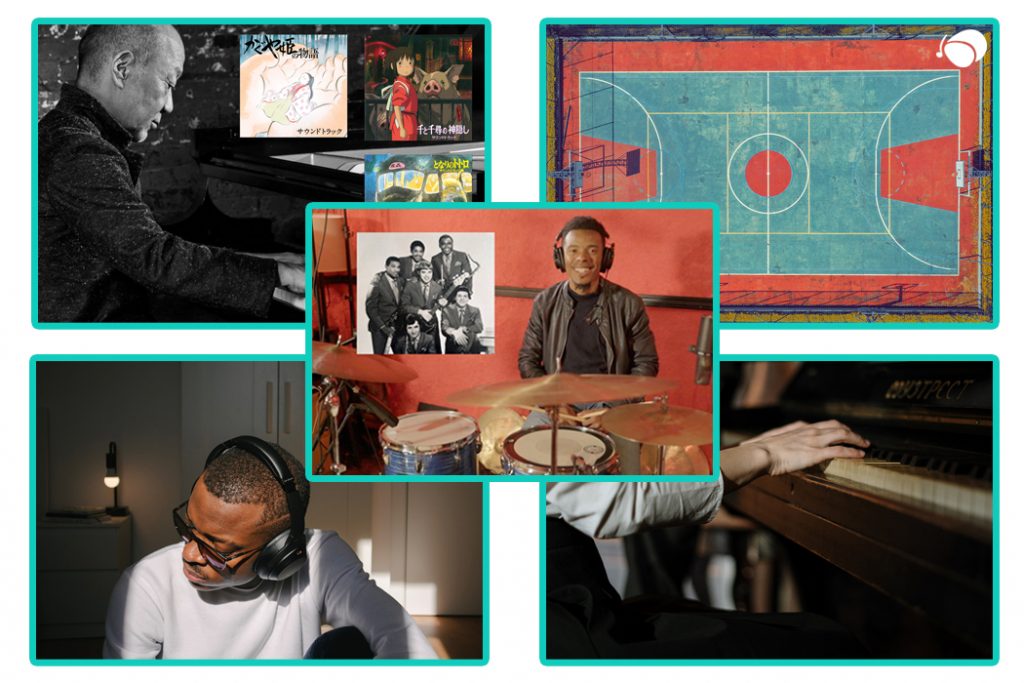
Calle Fortaleza, Viejo San Juan
7/21/19, 2:30 p.m.
Puerto Rico is the island of the drum. Rooted in both Taino and Afro-Yoruban cultures, the island known to many by its indigenous name, Boriken, has responded to centuries of colonial abuse and hardship through a resilient display of song and dance. Local styles of Afro-centric drumming, such as bomba and plena, have not only fostered and educated younger generations in both traditional sound and instrumentation, but have been crucial in the development of contemporary styles of popular Latin music, such as Latin jazz, salsa, and reggaeton.
So it would come as no surprise that, during the past week and a half of island-and-diaspora-wide protests against scandal-embroiled governor Ricardo Rosselló, percussion has played a crucial role in how the Puerto Rican people express their frustrations. A particular style of sonic protest, known locally and across Latin America as El Cacerolazo, has become a standard means of creating the necessary noise to get la gente’s point across.
El Cacerolazo, or casserole protest, consists of banging your nearest pot and/or pan as loudly as possible with your nearest wooden (or metallic, if you need extra decibels) spoon. The beauty of El Cacerolazo is that protesters can participate both en masse in the streets and directly out of their windows in solidarity with those below, which makes it extra popular for both young people and the elderly.
To experience a Cacerolazo is to be engulfed in a battering sound from every angle. It is impossible for anyone in the neighborhood to tune it out, including those in power who have ignored the unaccompanied voices of their constituents. Over 500 years of tradition, might, and resilience can be heard in the deafening pulses of banging, clanging, and chanting.
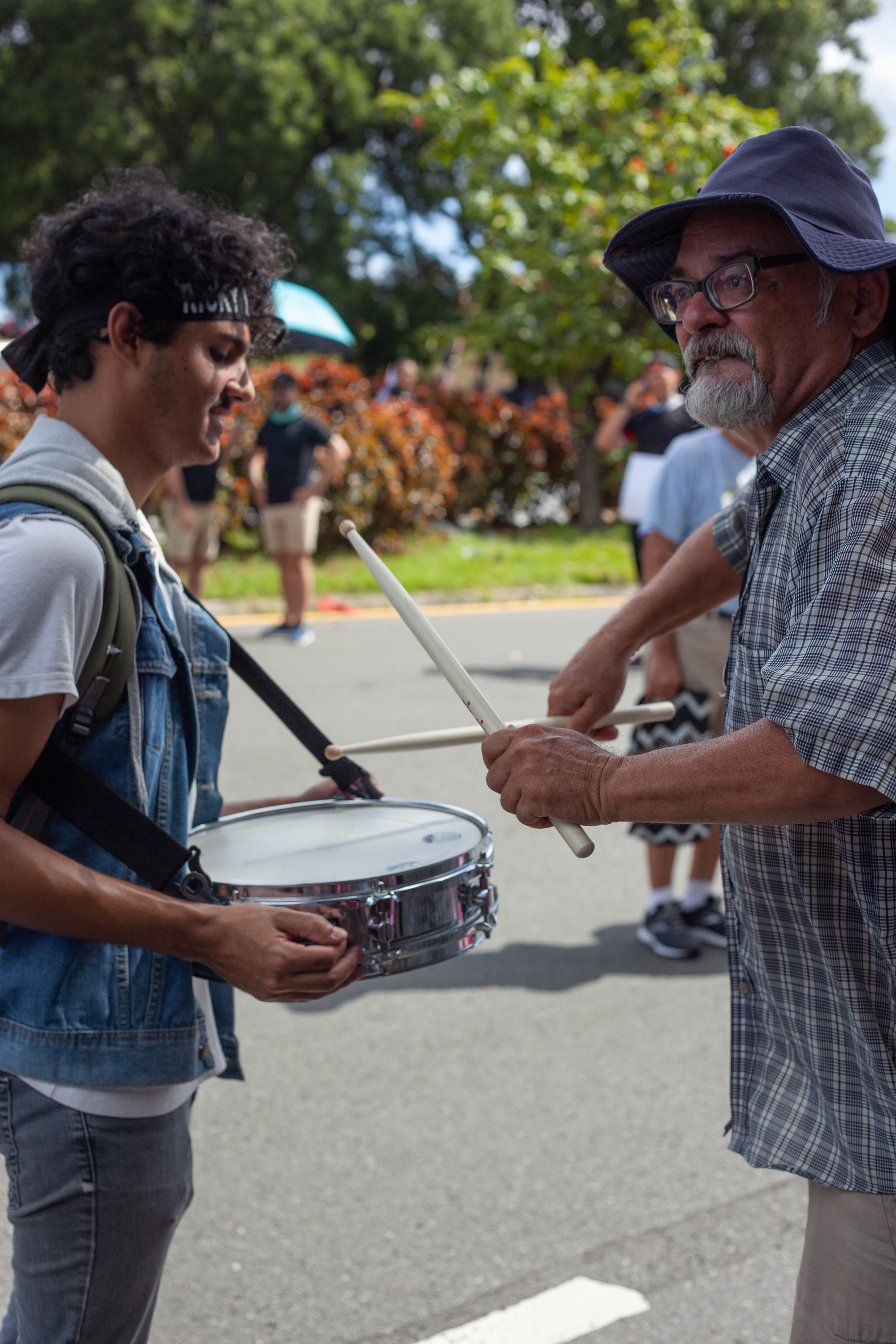
My partner and I were lucky enough to experience and capture one of the many Cacerolazos this past week on Calle Fortaleza, only a block away from the governor’s mansion, La Fortaleza. We had parked outside the old city so as to avoid any road closures, which had seemingly begun popping up through the isleta at any moment’s notice. This required walking the entire latitude of the old city towards where the majority of protestors were gathering. With each step we took heading west on Fortaleza, the drums grew louder. We picked up the pace and managed to rush through crowds of curious tourists who kept their distance as they tried their best to enjoy their week off in the most beautiful place in the world.
You can listen to my recording of the protest as a kind of soundwalk here (and there’s a second soundwalk recording further down as well):
With a significant reduction in motor vehicles on the streets of the old city in comparison to the rest of Metro San Juan, the “first colony” has a natural soundscape that is almost entirely determined by the sounds of the people on their feet. Restaurant workers and bank executive commuters alike know that the quickest way to get from point A to point B in the old city is to just schlep it out on foot.
The sonic result, especially throughout these weeks of protests and street closures, is a Pueblo-wide plane with very little acoustic obstructions. The narrow passageways of these Colonial Spanish streets act as their own amplifiers; sound is funneled through them like water from top to bottom. And through these natural amplifiers, the casserole pans hit us like a ton of bricks. Fluctuating between pulsing beats in unison, arrhythmic walls of sound, and solemn group chants of revolutionary hymns, El Cacerolazo Puertorriqueño articulates, for many, what otherwise couldn’t be said through spoken word alone.

Paro Nacional on PR-18, Hato Rey
7/22/19, 9:30 a.m.
On Sunday, July 21, the governor released a Facebook Live video announcing his resignation as party president, while reiterating that he would not resign as governor. The people of Puerto Rico felt as though these concessions only added fuel to the fire. The island’s workers’ unions had scheduled a general strike to take place at 9 a.m. on Monday, July 22, on highway route PR-18 in the Hato Rey borough of San Juan, and Sunday’s announcements all but guaranteed a massive crowd the following morning.
We woke up at the crack of dawn for this one. We parked about five avenue blocks from the highway on-ramp so as to avoid getting stuck in road closures again, and began to trek on foot towards the expressway.
Despite the cacophony of the Cacerolazo just two days prior, the noise heard on the expressway was monumental, a testament to the sheer volume of activists out on the streets. Even by 10 a.m., the number was in the hundreds of thousands. By 2 p.m., the estimates were well over a million, with the rain only acting as temporary relief from the heat and not as a deterrent. The wall of sound went beyond pots and pans; this was truly an indecipherable sensory overload.
What do over a million people sound like when congregating together?
How can we determine who’s who in a parade of drumlines, Plena brigades, truck beds of sound systems blasting Residente and Bad Bunny, thousands of airhorns, and a never-ending ocean of protestors? Here, the individual protestor is only one of over a million ensemble members in this joyous orchestra of the people.
A recent diss track to Governor Rosselló — recorded by Residente, Bad Bunny, and Ilé entitled “Afilando los Cuchillos,” or “Sharpening the Knives” — played on nearly endless repeat through speakers of a variety of shapes and sizes on the march route. While protest music has existed for decades throughout the Americas, the immediate virality of the internet has allowed for tracks like this to become national hymns virtually overnight.
The song remains #1 on YouTube’s global trending list as of Tuesday morning.
As a truck full of speakers slowly rolled past blasting Residente’s opening verse, the subwoofers blew air onto passerby faces like a much needed fan. The power amps were clearly overheated, clipped, and distorted like MacBook speakers, but la gente were feeling it far too much to care. The low-fidelity crackles and low-frequency rumbles captured the energy of the crowds perfectly, as if the song were produced specifically to be heard out of overworked mobile sound systems in moments of protest. People young and old spat along with the five-day-old verses of “Cuchillos” as if they were classic standards they’d grown up with.
The people were united, and these anthems act as one of the many glues necessary to keep la gente motivated to continue moving forward.
Songs like “Cuchillos” illustrate the need for artists to reflect and voice the concerns of their people, while in this particular case it reiterates the omnipresent rhythm of Puerto Rico. Throughout these 11-plus days of protest, even at its most violent and chaotic, the rhythms of the island remain clear and proud, like a beacon of humanity in the face of a cloud of tear gas and buckshot smoke.
The pounding bass of “Cuchillos,” the banging of a dembow by hand on the metal shutters of the Marshalls, an elderly Boricua couple sitting in the shade on lawn chairs, banging two pairs of claves in perfect rhythm as if they were the youth marching band leaders — this is Puerto Rico’s corazón y espiritu manifesting itself in real time, letting everyone and their mothers know through the power of sonic protest that this truly is a movement for all Puerto Ricans.
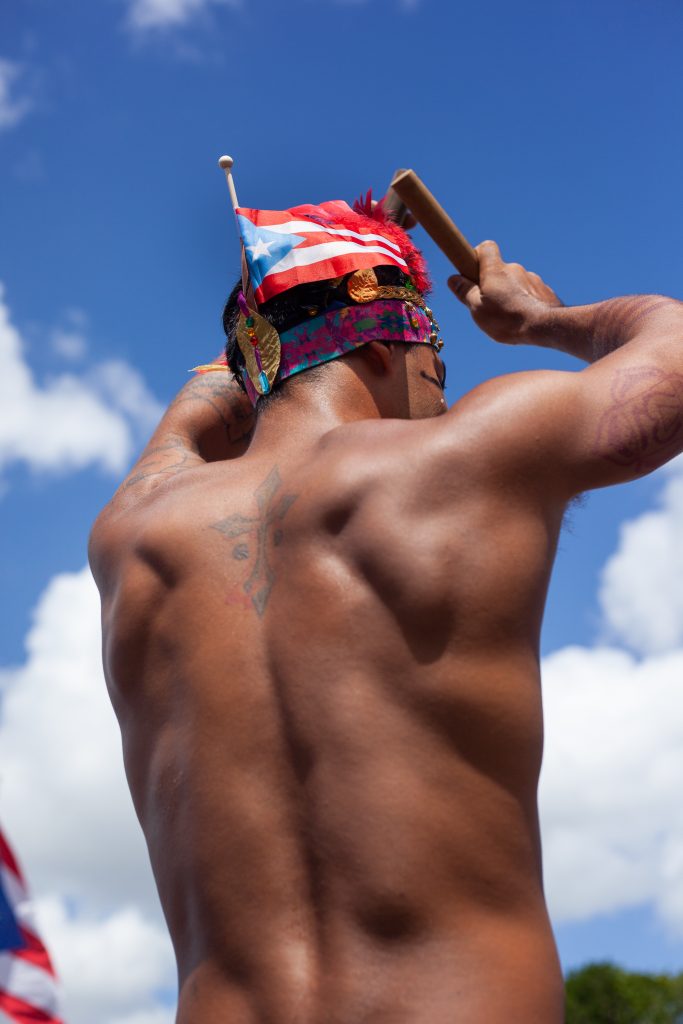
The Puerto Rican noise of resistance, like these never-ending floods of people taking to the streets, is an ongoing mammoth of texture. Consistently breathing, fluctuating in dynamics, taking moments to rest, but never remaining silent longer than necessary. As one family decides they’ve had enough of the march, another family takes their place, cowbells and airhorns in hand, climbing one by one over the concrete highway banisters to join their neighbors in the procession.
It’s this united noise, this national cacophonous celebration, that best describes the strength and might of the Puerto Rican people. Despite over 500 years of colonialism, exploitation, and experimentation at the expense of the people, the island of the drum continues to prove that its culture is destined to survive. As long as the noise continues, the people united will never be defeated.
Improve all aspects of your music on Soundfly.
Subscribe to get unlimited access to all of our course content, an invitation to join our members-only Slack community forum, exclusive perks from partner brands, and massive discounts on personalized mentor sessions for guided learning. Learn what you want, whenever you want, with total freedom.

